Dedicated Studies Group provides in-house expertise
Saber Power’s dedicated power systems studies group supports in-house projects and stand-alone client projects
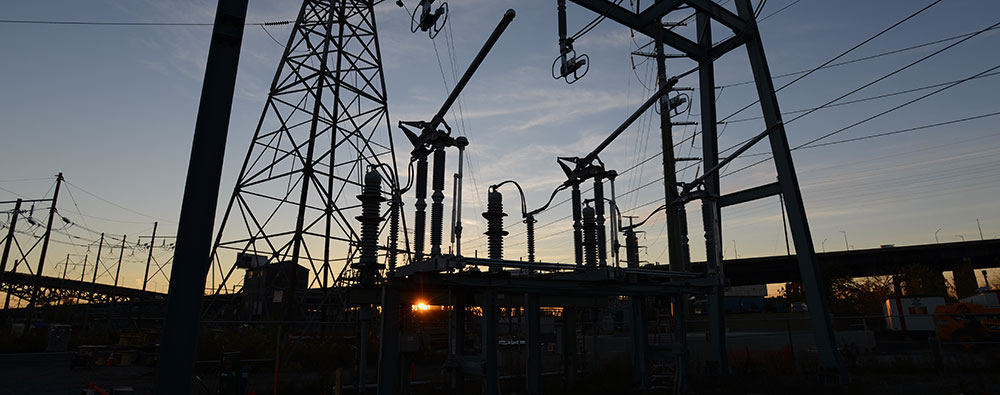
Saber Power’s engineering department relies on our study group to start and finish each project. The studies team provides valuable input at the inception of a project through preliminary power flow and short-circuit studies so equipment can be properly specified. They re-engage once the design is sufficiently developed to provide our clients with final short-circuit, power flow and arc-flash hazard studies, along with developing final relay settings and a report summarizing the system.
In addition to this valuable service, Saber Power’s studies team is constantly engaged with clients on stand-alone work as noted below. All studies incorporate the latest ANSI/IEEE or IEC equipment specifications and calculating guidelines. Saber Power’s engineers and technicians travel to our clients’ facilities and gather all data required for the studies to be performed including: make, model number and settings and ranges of all protective devices, ratings of equipment (switchgear, MCCs, power transformers, instrument transformers and motors), fuse sizes, and conductor sizes, lengths and insulation levels, and system topography to ensure the system model we create accurately represents the facility.
Short Circuit
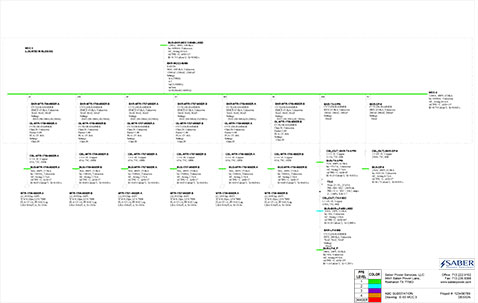
A short circuit study provides the foundation on which other system studies such as coordination, device evaluation and arc-flash are built. Various unbalanced situations are analyzed such as three-phase, single-line to ground, line-to-line and double line-to-ground faults.
At its essence, a short-circuit study deals with system failures involving insulation breakdown and produces results that can be used to:
- Ensure proper equipment ratings for equipment on new projects
- Verify the withstand and interrupting ratings of devices relative to the projected fault current
- Provide necessary input data to develop time-current curves and protective device settings
In addition to being required by the National Electrical Code (NEC,) short-circuit studies are invaluable tools for assessing the performance of an electrical system to ensure system and personnel safety are maintained during contingency situations.
Power (Load) Flow

A power flow analysis is performed to examine how different voltages and power levels are maintained under normal and contingency steady-state conditions. Power flow studies are great tools for planning a new system or in analyzing expansions of an existing electrical network. Power flow studies can be used to:
- Verify proper equipment ratings
- Select transformer taps and configure on-load tap changers
- Reduce power losses
- Address reactive power flow and voltage issues
The study is a simulation replicating steady-state conditions and allows profiles to be generated for various operating scenarios producing quantifiable power flow parameters, power factor, losses, and bus voltages. By correcting these profiles, it is possible to greatly reduce the operating cost of a system and decrease the amount of time needed between maintenance intervals.
Power Factor
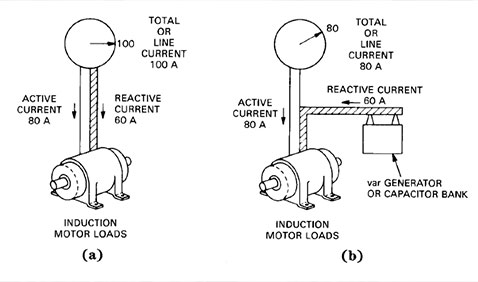
A power factor analysis is a subset of power (load) flow study. Many facilities operate at a much lower power factor than is optimal and end up paying considerably higher utility costs than they should.
Power factor is the difference between the real power (kW) and the apparent power (kVA) being consumed by a component or a system. Each piece of equipment has its own power factor and collectively they determine the system power factor. A high power factor (>.95) indicates efficiency while a low power factor is associated with increased load and potentially voltage drop. Common culprits are HVAC systems and lightly loaded induction motors. Power factor studies are used to:
- Optimize power factor capacitor sizing and placement
- Develop step and stage requirements for capacitors
- Free transformer capacity by adding capacitors to provide reactive power and minimize the voltage drop associated with dragging VARs through the supply transformer
Uncorrected power factors can create high demand charges in a utility bill and place unnecessary stresses on an electrical system. Saber Power’s study team can develop a rigorous power flow and power factor analysis to mitigate these issues and help keep the lights on.
Motor Starting

As motors become increasingly large and have higher inrush currents due to efficiency standards, the need for a thorough analysis of the starting of these devices is increasingly critical. Induction and synchronous motors can have inrush currents between 3 and 10 times the normal full-load current rating. Voltage dips associated with these events can be felt throughout the system and need to be analyzed to ensure terminal voltages for operating equipment remain within the tolerable ranges so mis-operation is avoided and contactors don’t drop out. Furthermore, torque varies with the square of voltage, so the starting motor itself must be evaluated relative to the system parameters to ensure it will develop sufficient torque to accelerate its load. Motor starting studies evaluate these and other system performance items and can be used to:
- Determine the effects starting motors have on other equipment
- Determine whether a motor will accelerate
- Analyze the response of generators to the starting motor
- Analyze whether alternate starting methods such as Y-start/delta-run, autotransformer, capacitor or solid-state (soft or VFD) starting are required
Whether a snapshot motor starting analysis (essentially a power flow study with a motor in locked-rotor conditions) or a more detailed dynamic simulation modeling motor speed-torque and acceleration time is required, Saber Power’s study team conducts motor starting studies early in the design phase of a project to ensure all associated equipment is properly specified.
Coordination
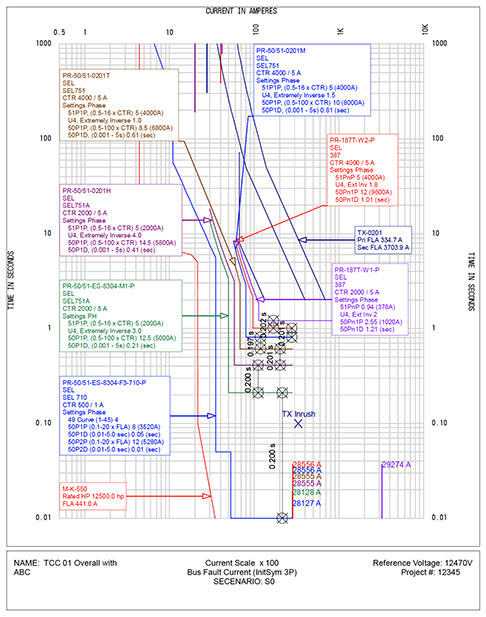
Protective device coordination studies are a critical component in specifying and developing protective devices and their settings. In particular, time-overcurrent characteristic curves for series devices are plotted on a common graph along with damage curves for equipment such as transformers and cables. This common graph allows us to identify areas of possible mis-coordination such as overlapping curves or overly long protection intervals. Coordination studies are required to:
- Minimize hazards to personnel
- Select overcurrent device ratings and settings
- Ensure the minimal amount of equipment is de-energized as the result of a fault
A properly coordinated system provides the optimal balance between sensitivity and selectivity, resulting in devices that trip when they should – and just as importantly, don’t trip when they shouldn’t.
Arc Flash
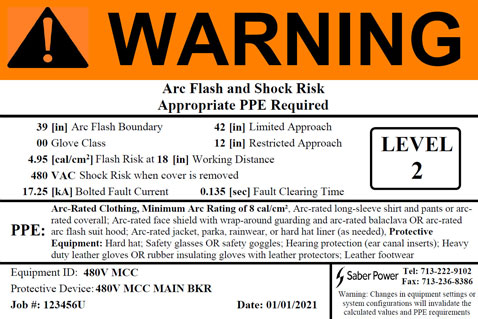
Assessing the hazards associated with arcing faults is merely the first step in developing a comprehensive plan to address the issue. The difficulty lies in optimizing personnel protection with system security.
An arc flash results from an arcing fault and is capable of producing a blinding flash and temperatures exceeding 35,000 ºF.The extreme heat of an arc flash can vaporize metals and seriously harm nearby personnel and equipment.Analysis of arc flash hazards can drastically reduce risks of an incident and prevent unnecessary harm and/or downtime.
The fundamentals of arc-flash analysis are illustrated in IEEE-1584 and NFPA 70E standards. The calculation procedures require the results of the short-circuit and coordination studies noted previously.
The results of these studies must be applied carefully to the arc-flash analysis so that realistic evaluations are made. Arc flash studies are used to:
- Categorize the hazard at specific equipment based on the incident energy
- Determine the arc-flash boundary – this is the closest approach allowed before PPE must be worn
- Bring a facility into compliance with NFPA and OSHA requirements
Saber Power’s engineers have performed thousands of arc flash and coordination studies and fully understand balancing the competing objectives of system security, in which selective protective device operation is paramount, with personnel protection in which the fault current magnitude and duration are critical.
Power Quality
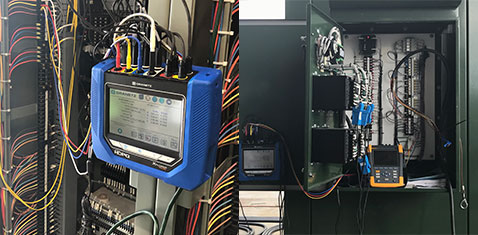
With the rise in demand for stable power and the ever-increasing sensitivity of electronic devices, power quality has become a critical issue for many consumers. An electrical power quality analysis allows our engineers to determine and mitigate the cause of outages, spikes, or surges in power systems.
Saber Power uses Dranetz PX5 meters or similar to monitor power equipment and measure harmonics, power factor, power flow and voltage sags and swells, frequency deviations and transients. Saber Power’s engineers take this information and determine how to best stabilize the system. Power quality studies are used to:
- Identify harmonic levels and sources
- Determine whether power quality issues originate within a facility or from the utility
- Reduce operational losses
- Prevent disruption of electrical power flow
Saber Power’s study engineers and technicians determine the most appropriate locations and monitoring durations for a facility based on the frequency and nature of the disturbances. Once complete, these data are analyzed and can be incorporated into an existing electronic model of the power system from which a detailed report is provided recommending remedial measures.
Harmonics
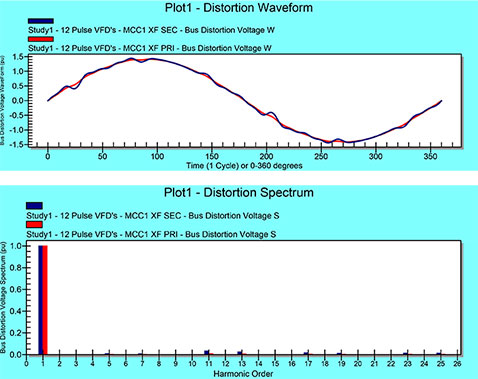
Harmonics in an electrical system are voltages and currents existing at frequencies other than the fundamental – 60 Hz domestically. Typically, these frequencies exist in odd integer multiples of the fundamental (e.g. 3rd harmonic is 180 Hz, 5th is 300 Hz, etc.). Harmonics are caused by non-linear loads such as variable frequency drives and switch-mode power supplies. They can result in mis-operation of electronic devices, equipment overheating, spurious device operation as well as equipment damage due to resonant circuits. A harmonics study can diagnose these problems and determine the appropriate course of action needed to correct them. Harmonic studies are used to:
- Determine voltage and current distortion level in all buses and conductors of interest
- Ensure compliance with IEEE 519
- Determine whether series or parallel resonance situations exist when capacitors are applied in a harmonic-rich environment
- Design harmonic filters as a mitigation means
Ultimately, harmonics are a power quality issue. Saber Power’s studies team can help with up-front design to ensure harmonic issues don’t arise and can also build a harmonic system model based on equipment or field-gathered monitoring/metering data to accurately diagnose and mitigate harmonic-related issues.
Stability
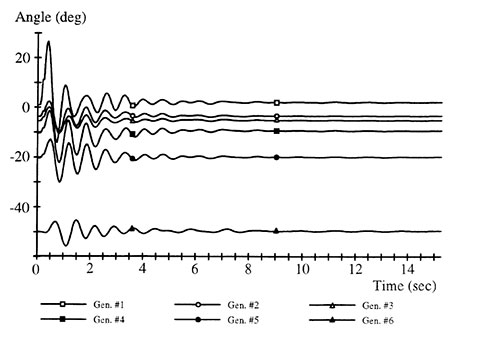
Unlike a power-flow study, which allows only analysis of steady-state conditions, a transient stability study is designed to determine how an electrical system will respond to specific conditions using dynamic analytical tools. Stability studies are applied to power systems with two or more synchronous machines and are used to:
- Analyze situations such as load rejection, generator loss, line tripping, short circuits and the starting of large motors
- Develop load shedding schemes and analyze protective relaying to maintain system stability
- Ensure systems are designed such that under these contingency situations, rotating equipment isn’t exposed to excessive transient mechanical torques and currents
Stability studies are intricate and data intensive, requiring detailed modeling of machine governors, voltage regulators, and exciters for input data for the time and frequency domain analysis required to determine stability. Saber Power’s engineering studies group understands these intricacies and can help our clients design systems that perform as intended under normal and emergency situations.
Grounding
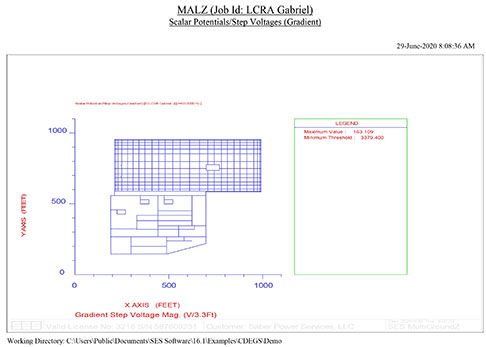
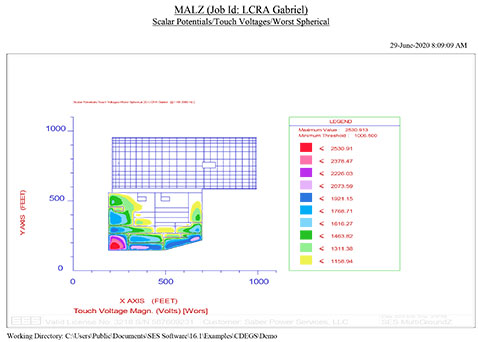
Grounding is critical for the protection of electrical equipment and the safety of workers. Proper grounding keeps devices safe from surges, lightning, and faults. Some equipment also requires grounding as an essential component for operation, as it serves as a common reference point. Saber Power’s grounding studies will detect any installation or calibration errors in your grounding system. These include problems in tripping tolerance (too sensitive or too insensitive), polarity issues, and neutral connections to ground.
Grounding studies are multifaceted and can be used to:
- Ensure compliance with code requirements for ground-fault protection and system/equipment grounding and bonding
- Analyze substation ground grids for limiting step and touch potentials to tolerable levels
- Ensure equipment, conductors and shield/drain wires are appropriately sized and protected
- Confirm grounding is adequate for lightning protection and instrumentation systems to function properly
- Coordinate grounding with surge protection
Saber Power couples this engineering expertise with its wholly-owned subsidiary, Saber Power Field Services, which provides soil resistivity via Wenner-method testing, ground continuity testing, and grid evaluation using Fall-of-Potential method.
Switching Transients
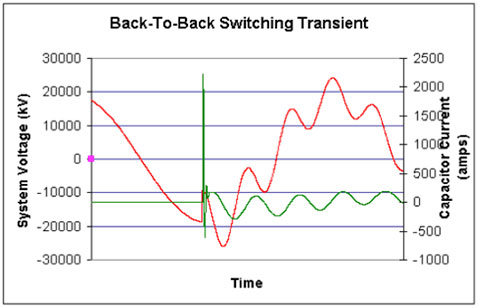
A switching transient study is a particular power quality analysis focused on temporary (transient) over voltages that arise from sudden changes in circuit conditions. Generally oscillatory and high-frequency, these voltage transients can be extremely damaging even to generally robust electrical equipment. Common culprits are capacitor switching, transformer energization, interruption of high currents and load switching. Switching transient studies can be used to:
- Identify the nature of transient duties in a power system
- Evaluate transient recovery voltage (TRV) response in circuit breakers
- Identify and specify mitigating means such as surge arresters, pre-insertion resistors and reactors
- Develop switching procedures to minimize operational procedures, to curtail transient exposure
Switching transients generally are of longer duration and significantly more commonplace than lightning-induced surges. Saber Power’s study team can perform switching transient studies as a stand-alone item or incorporate the results and solutions into a thorough insulation coordination analysis.
Power System Reliability/Availability
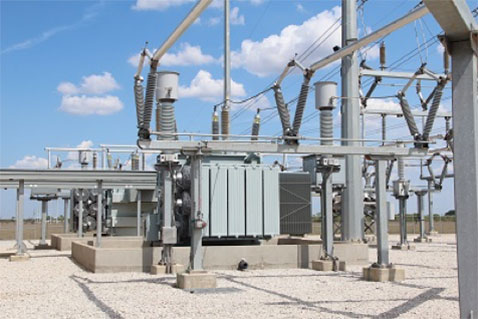
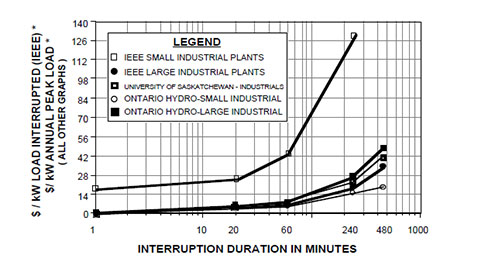
An electrical power system reliability study is a mathematical projection of equipment availability, i.e. the percentage of time a particular piece of electrical equipment can be expected to be available for use as intended. This modeling takes into account the reliability index of not only the load, but all items required to function properly up to and including the power source. Saber Power creates an electronic model of the power system in which each piece of equipment is assigned a reliability index using statistics compiled over many years to accurately reflect the failure rates and repair/replacement durations of components. Reliability/availability studies are used to:
- Compute reliability indices at any node in the system
- Perform cost/benefit analyses of various system designs and evaluate whether redundant components are cost effective
- Project operational efficiency of a facility based on equipment down time and the associated costs on the affected processes
Saber Power’s engineers can create a detailed reliability model tied to costs of process interruptions for projects in nascent developmental stages or for systems experiencing frequent upsets to help clients analyze the level of electrical infrastructure needed to operate in the most practical fashion.
Field Mitigation Services
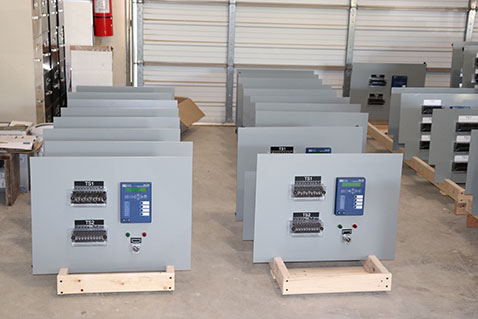
Our services don’t stop with the issuance of a study report. As a matter of routine, every report contains comprehensive documentation detailing all system deficiencies and options to mitigate them. As a one-stop shop for our clients, Saber Power offers field mitigation services through our Engineering, Turnkey Solutions and Field Services divisions. In this capacity, we address things such as mis-coordination, inadequate protection, NEC violations, excessive arc flash levels, motor starting issues, low power factor, non-functional or outdated equipment and poor voltage regulation.Our mitigation services include items such as:
- Protective device re-calibration
- Protective device replacement
- System topography modifications
- Transformer tap adjustments
- On-load tap changer setting adjustments
- Fixed or multi-stage capacitor additions
- Remote breaker operator additions
- Arc flash sensor additions either stand-alone or multi-conditional dependent
- Relay logic modifications
- Maintenance mode/ARMS/other additions and adjustments needed for safe operation
- Breaker trip unit changeouts
- Cable changes
All mitigation work is fully engineered, tested and commissioned with test reports. As-left settings and updated facility drawings are provided at completion of the project.
Saber Power’s study team includes a contributor, chapter chair and ballot committee member for the IEEE Red and Brown books, an engineer from one of the leading power system analysis software companies, multiple licensed professional engineers, and NETA-certified electrical field technicians. In addition to the studies detailed above, we also perform cable ampacity studies; cable pulling studies; DC station power studies; EMT simulations; NERC, FERC and interconnect studies; noise abatement studies and a host of others.